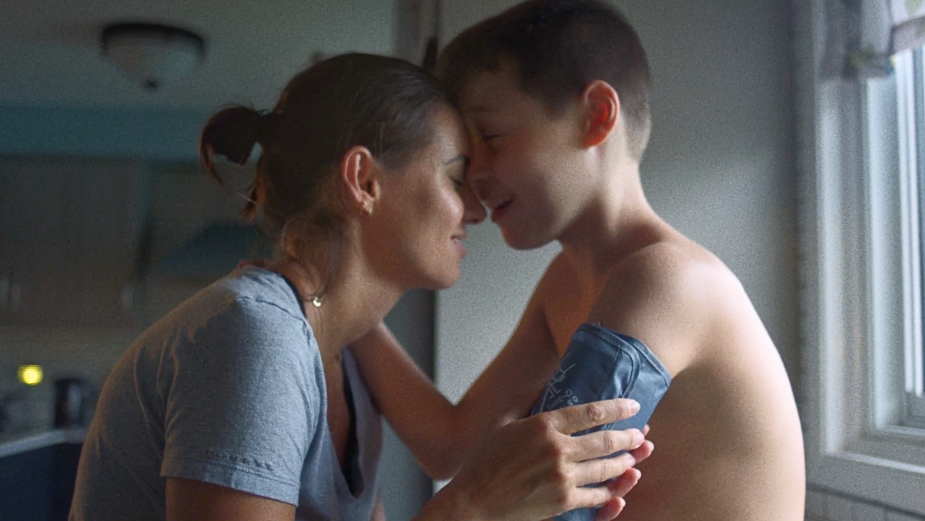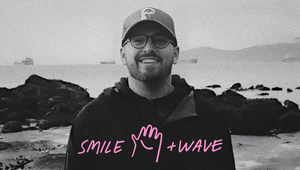One in four Canadians are caregivers. What this means to each of them, will be entirely different. From looking after an elderly parent in Saskatoon, to being the sole carer of a disabled child in Vancouver, to supporting an injured spouse in rural Alberta – the most intimate and selfless aspects of the job take place behind closed doors. Petro-Canada CareMakers Foundation strives to raise awareness of this reality, by providing support to those who are tirelessly dedicated to caring for others. The charity’s latest PSA - ‘24 Hours of Care’ - captures the challenging reality these families face each and every day.
Covering unprecedented ground, the long format film offers real-world insight into the lives of 10 Canadian caregivers. Shot in real time, over 24 hour periods, the project endeavours to be the truest possible representation of the hard work that goes into caregiving, warts and all. Entrusted with post production responsibilities, Toronto-based Smile + Wave were honoured to step up to the plate to handle the edit.
Handling the entire post-production process of the 24-hour film - from offline edit to colour and finishing - was no small feat for Smile + Wave. Operating as a finely tuned relay race of creative curation, editors Mariam Fahmy and Robin Haman, collaborated with the film’s director, Jennifer Roberts, to deliver a 24-hour film that would live online on PCCF’s interactive platform, along with three 60”, 30” and 15” spots for broadcast.
Sitting down with the team, LBB’s April Summers hears how editors Mariam and Robin, director Jennifer, and EP, Shenny Jaffer, wholeheartedly embraced the challenge, correctly assuming the project would be a once in a lifetime opportunity to be involved in crafting something truly special.
LBB> This is an extremely ambitious project – how did you approach creating a treatment?
Jennifer Roberts, director> So much of my approach to the film happened in pre-production. The most important element for me was making sure the families felt comfortable sharing their lives on camera. Before filming we spent a lot of time getting to know one another through many phone and text conversations. I also sent the caregivers iPhone kits so they could self-film journals. We used their journals in the 24-hour edit, and also as a way to understand which elements of their stories to include in our film.
LBB> This focus of this campaign is “Family Caregiving” and the 8 million unpaid caregivers across Canada. How did you decide which stories to capture as part of this project?
Jennifer> Family caregiving looks different for everyone, so it was important for us to find
families that represented a wide array of what caregiving is. We wanted to show people from diverse backgrounds, and we met with many amazing families before narrowing it down to our final families. Then, through both our conversations and the self -filmed journals, we decided which parts of their stories were essential to the film. When we were filming, we were often present for very challenging or intimate moments, and I often had to decide ethically when we should turn the camera off.
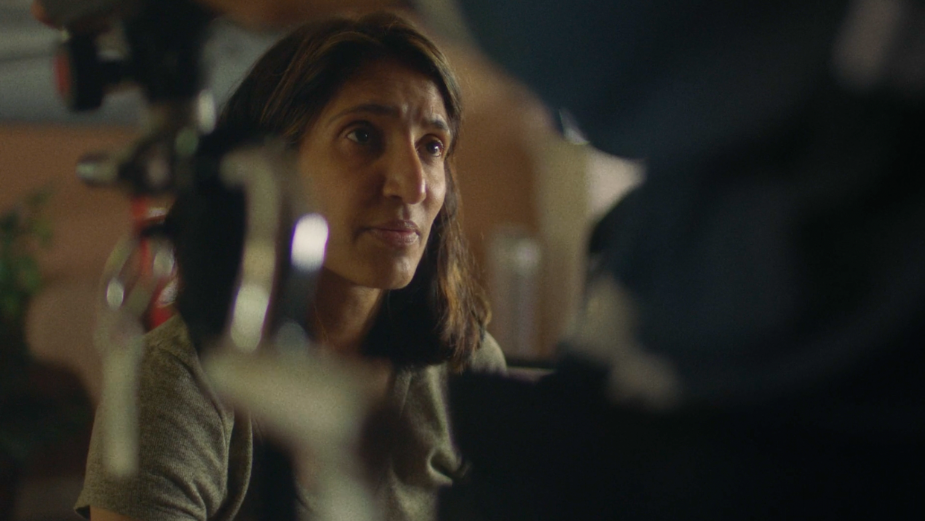
When we were filming Sakina and her son, Yasin, doing physical therapy, things became challenging and painful for Yasin during some walking exercises. Yasin was frustrated and started crying and Sakina was tearfully apologising to him. It was a hard moment but I decided to keep filming because it felt so important to Sakina’s story. She carries out these exercises that are so hard on them both, on a daily basis, and this scene demonstrated so much of Sakina’s strength and the challenges caregivers face.
LBB> How did the editing of this project support the creative vision of this campaign?
Mariam> My approach for editing this film was to keep it simple, and let the stories play out with all of the genuinely raw moments. Many of the caregivers said that people don’t truly understand what it takes to be the person someone fully relies on. We took that to heart and agreed that this was not going to be a traditional portrait of a caregiver, but a film that shows the reality of what it takes to care for another. We saw this as an opportunity to showcase how tough it can be at times, contrasting with the rare, tender and rewarding moments. The team and I felt that over-cutting this film would have felt disingenuous. Many of the families had tough stories and we wanted to show a holistic picture of their struggles and accomplishments, without it feeling exploitative. Allowing us into their lives was an incredibly vulnerable act and we took the responsibility to do right by them.
Robin> I edited the broadcast spots which were designed to drive audiences to the 24-hour film. We wanted to present the spot as authentic moments while still feeling as high quality and artistic. Thankfully for me, the team captured so many amazing and real moments that it simply came down to selecting the best footage to tell our 60” story. Credit to Stuart Cameron, the DOP, for capturing so much beautiful footage.
LBB> Jennifer, what directions did you give the editors? And what did the edit add to the film?
Jennifer> The edit was so key to telling truthful stories. Everything we included in the edits was in service of the family’s stories and their character development. If it didn’t serve the story or felt, morally, too personal, then Mariam and Robin knew what not to include.
Editing a 24-hour film is so ambitious but Mariam’s thoughtful decisions and sequencing created a compelling, engaging narrative. She was able to make sure the audience could drop into the film at any point and find a moment that gave them insight into the caregivers’ lives. We developed a nice shorthand.
For the broadcast spot, Robin did a beautiful job of distilling some of the most touching moments and weaving them into an engaging example of 24 hours in the life of a caregiver. His pacing and rhythm were key to the emotional impact of the film.
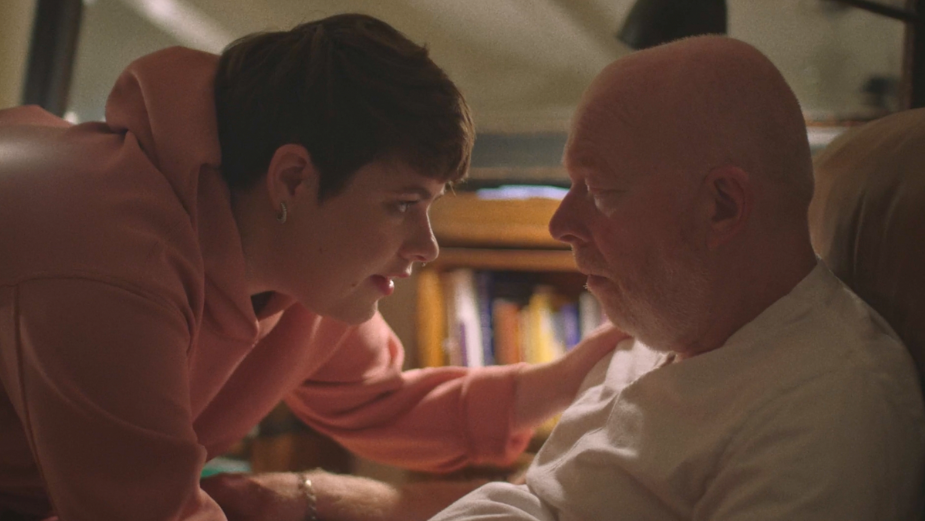
LBB> As far as editing jobs go, this must’ve been one of the most ambitious projects you’ve ever worked on, due to the enormous amount of footage. What sort of challenges did you face when organising the 24-hour footage? And how did you overcome these obstacles?
Mariam> It certainly was the most ambitious project I’ve ever worked on! We were looking at a three month turnaround, from start to final delivery. In addition to the 14 days of cross-country filming, the caregivers were also providing us with 2 weeks worth of self-filmed journals, so we had various footage coming in at all times. Before filming began, I did a lot of research on the logistics before mapping out how I wanted the workflow to go. Organisation is key when cutting long format, and a project of this magnitude had to be seamless across the board. My incredible assistant, Emma, was on the same page as me from the very beginning, and stayed on top of things. She made sure I was always on track with the footage and story builds, diligently keeping the production and creative team apprised at each of the stages. In the brief, the creative team had broken the day up into 3-hour segments and that felt like the right pacing for organising the clips and structuring my timelines. We had a colour-coded system for each family to find people and moments easily.
Robin> As far as organising, it was all hands on deck by the time I was cutting the 60” spot. Mariam had already selected most of the footage for the 24-hour film, so she had done a lot of the heavy lifting. With the selects I had received from Mariam, and the on-set notes from Jennifer and the team, it was simply a matter of making many passes at the selects until we had a reasonable amount of footage to start cutting the 60. It was basically a process of elimination as we searched for the best moments.
LBB> Mariam, you were working with footage in multiple languages – how did you navigate this?
Mariam> I speak French and have cut many projects in other languages including Mandarin, Spanish and Slovenian. When cutting traditional scripts in other languages, you know the narrative of the story, and you work hand-in-hand with either a translator or creative to select the performances that fit best. In the documentary world, there isn’t a script, so you look for cues of what’s happening in the moment and how the people are engaging with one another, and you build from there. There were some scenes I wasn’t sure about and for those Shenny facilitated a translator to give context on what was being said, to ensure we were staying true to the conversation.
LBB> In what ways did this project help you sharpen your editing skills?
Mariam> It definitely helped me think outside the box. In a constant fluid process, I was crafting these intimate and captivating stories with mini narratives that linked the families' experiences, while simultaneously looking at the bigger picture of how all of these stories flowed together.
Robin> Getting away from the traditional boarded and scripted job helped keep me on my toes. Jobs like this can be really scary to walk into, knowing that there will be a lot of footage with real people and there will be no retakes, just real moments. The agency and production teams did such an amazing job on location - when I saw the footage I knew this would be a special project.
LBB> What feedback did you receive after submitting the final edit?
Mariam> The feedback was unreal! Receiving messages about how the families were loving it and how much it meant to them for everyone to see what caregiving means through their eyes was particularly emotional for me.
Robin> When the final edit went live all of the feedback received was so positive. For the amount of work everyone put into this project - from start to finish - it's always a breath of fresh air to see a positive reception.
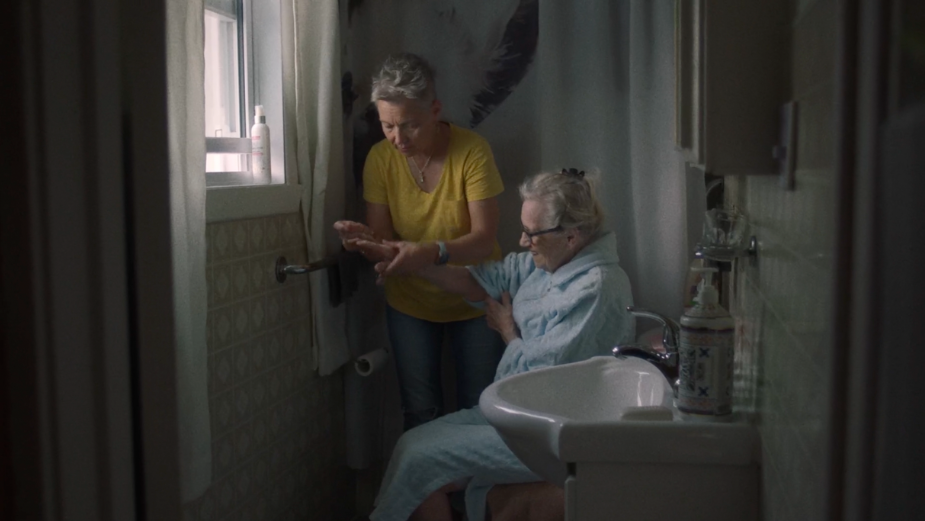
LBB> Shenny, how does this project demonstrate Smile + Wave’s capabilities?
Shenny> We had full control over the process from start to finish, which meant our offline and finishing artists could collaborate earlier on, to avoid potential bottlenecks in the schedule. Our colourist, Rita Ushakova, along with our finishing artist, Jon Garofalo, reviewed preliminary edits with editors Mariam and Robin, to figure out a look and feel that not only showed the everyday reality but also stood out from the other content in those spaces. Our team then put together a seamless workflow that took into consideration the terabytes of footage to be organised and made easily accessible to production, agency, clients, and our colleagues.
LBB> What are you most proud of about this project? And why?
Jennifer> I’m very proud of the awareness this campaign raised about family caregiving. Over 8 million Canadians dedicate their lives to full-time caregiving but the work happens in private. Being able to collaborate with the caregivers, to elevate their voices and raise awareness of their stories, was very rewarding.
Shenny, executive producer> It really was a village that came together to create this very unique piece of creative - the project tested us, as individuals and as a community.
Robin> I'm so proud that the caregivers showcased in our film had a chance to tell their stories. The level of selflessness is inspiring and I was fortunate to have had the opportunity to help tell their story.
Mariam> This was an awesome and incredibly ambitious undertaking, and definitely one for the books!

